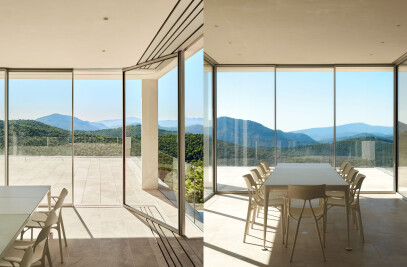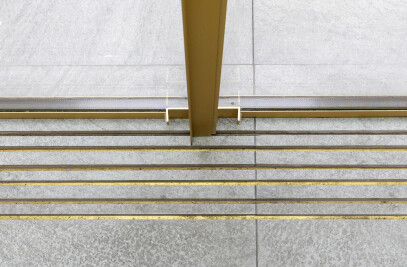The Diamond Exchange in Amsterdam has been rebuilt, revitalized, and reimagined in a dynamic collaboration between architects, designers, engineers, and restoration specialists.

The original building was completed in 1911 by renowned architect Gerrit van Arkel during the city’s heyday as an international hub for diamond trading. Built in Art Nouveau style, the structure featured a striking bell tower, large windows, sophisticated accents and decorative elements. In the years following the second world war and subsequent economic decline the building fell into disuse and disrepair. A fire, several renovations and poorly executed additions over the following decades left the structure devoid of its original elegance and charm.

In 2015, the building was jointly purchased by property management firm Zadelhoff & Sijthoff Media, with a vision of restoring it to its former glory but also revitalizing both the building itself and the reputation of the city of Amsterdam as a centre for creative industries of all kinds. The new building, Capital C Amsterdam, has faithfully restored the original structure and added a dramatic zeppelin style roof dome.

Zwarts & Jansma Architects (ZJA) led the design team and their brief encompassed three core objectives: To restore the exchange with fidelity to van Arkel’s original design; to adapt the interior of the space to facilitate flexible, modern workspaces; and to add a contemporary addition for public use and enjoyment. To that end, over twenty designers and artists collaborated to design various aspects of the project, from entrance to stairwells to pop-up gallery spaces. ZJA partnered with infrastructure specialists Braaksma & Roos Architectenbureau to reconstruct the building’s façade, roof towers, and original roof edge, using archive drawings and photographs as a guide.

A restaurant and terrace were added on the seventh floor inside the roof dome. The grid shell construction allows dramatic curvature and a swooping form. Glass panels covering the structure allow a translucent, bright interior and reflects the light and the skyline in a myriad of directions in addition to reflecting the building below, a metaphorical diamond crowning the original structure and highlighting the dynamic relationship between old and new. The original bell tower has been restored and remains the core focus, with the new dome echoing and playing on its form. A new entryway and public green space are planned for the foot of the building.

Design and engineering firm Octatube took on the technical development and structural calculations needed to realize ZJA’s dome design. The 10 metre-high free form structure deviated from conventional geometric shapes, making the design process highly technical. All the parts of the structure – glass panels, steel beams, etc, differed geometrically, so that if one part of the design was adjusted, the whole structure would need to be adjusted.
Custom modelling software and cutting-edge parametric design methods were used to play with the relationship between design intent and design response and to algorithmically model how parts of the structure would fit together. Investing time and energy into software modelling prior to construction paid dividends on the actual fabrication of parts for the dome in terms of cost and time saving through using file to factory fabrication. This method allowed assembled elements to be manufactured on the same pallet and allowed the engineers to theoretically test how particular materials would respond to welding, such that when it came to the practical elements of production, both complexity and cost were reduced. Other engineering innovations included a BIPV (building integrated photo voltaics) system which integrated solar panels into the structure, combining generation of solar energy within the actual glass used in the roof panelling.

The end result of the collaboration between all design partners is an elegant building anchored within its rich and storied heritage but also strikingly brought into modernity through the unique dome. The dome can at once be seen from a distance across the city and also provides spectacular views from the roof itself, a glittering diamond crown. The building is reimagined as a creative industry hub with a combination of contemporary offices, galleries, and public spaces. The faceted dome mimics the cut of a diamond and serves as a sparkling jewel atop a heritage monument.

































